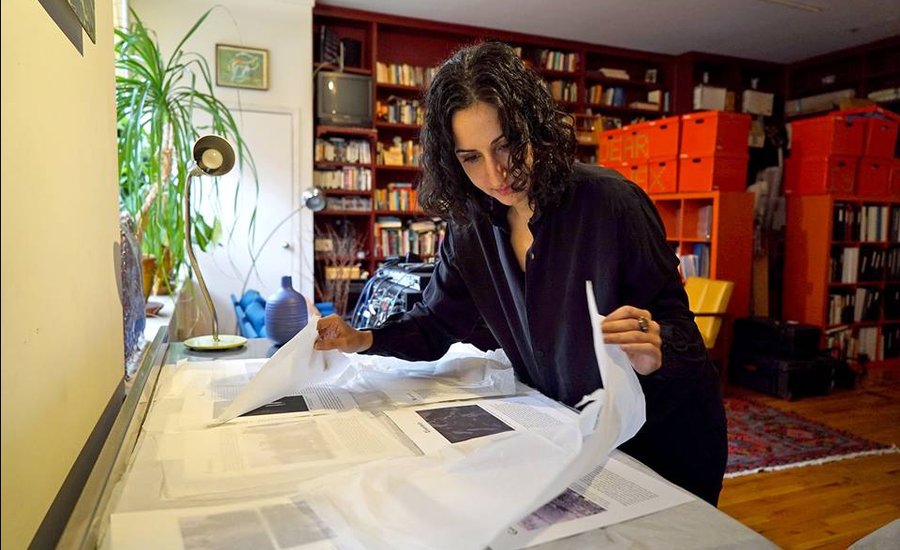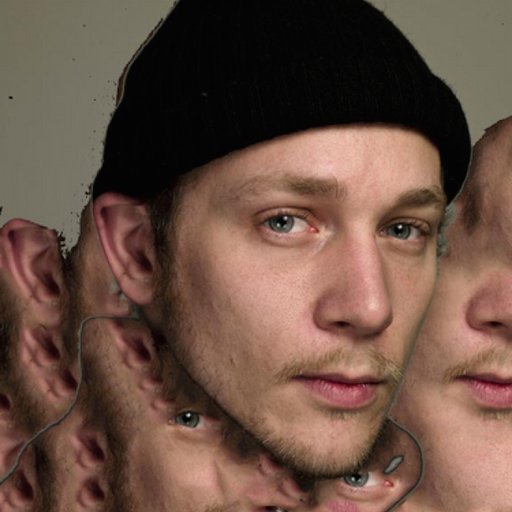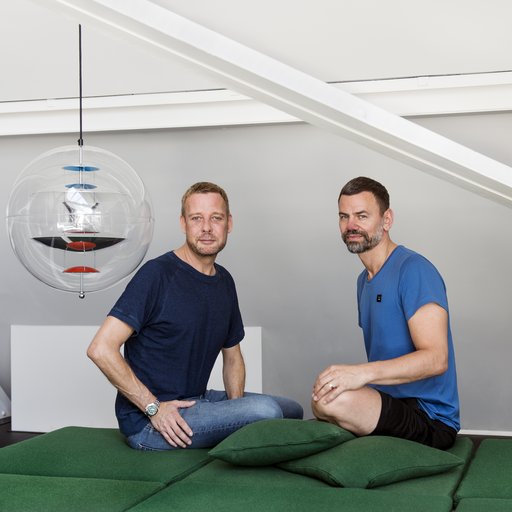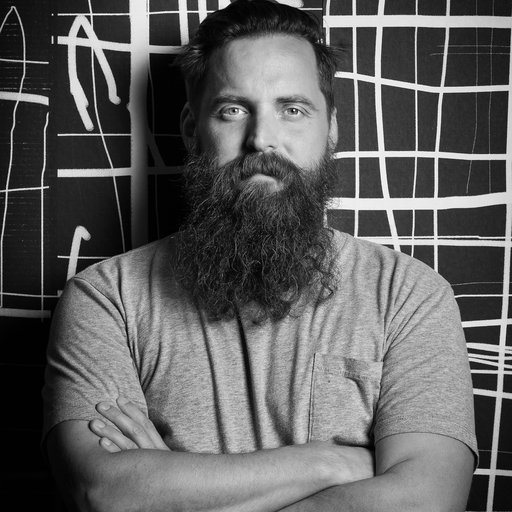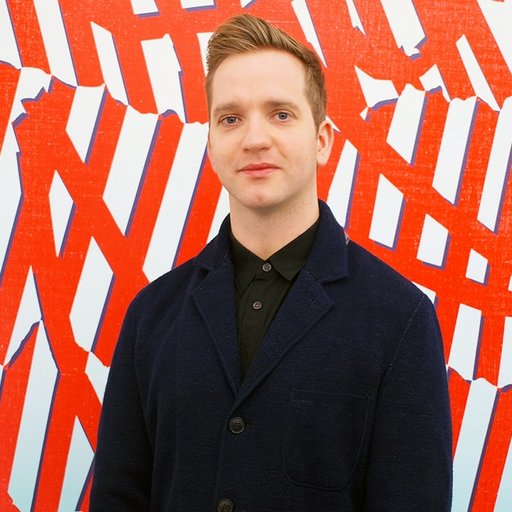The artist Mariam Ghani’s research-based work moves nimbly between such diverse and heady subjects as the history of New Mexico’s landscape, the perilous contours of nationalism, endangered languages, and the failures of America’s invasion of Iraq and Afghanistan. That last subject, it so happens, is one that she knows intimately well. For one thing, she is half Afghan herself, having been raised in Brooklyn by an Afghan father and Lebanese mother. For another thing, her father, Ashraf Ghani, is currently the president of Afghanistan, and a former academic who has written extensively on the collapse of nation states.
In Mariam Ghani's eyes, being an artist is the closest thing to being a modern-day public intellectual. She shares her parents’ commitment to the importance of critical thinking and public discourse—in fact, she collaborated with her father on the text Afghanistan: A Lexicon for the last dOCUMENTA—but channels it through an investigative practice that demonstrates the power of art to make sense of the messiness that is contemporary geopolitics. One can think of Ghani’s projects as "contact zones," to borrow theorist Mary Louise Pratt’s term for social spaces where cultures clash and mistranslations occurs. What we see, then, is their fallout.
In her Brooklyn studio on a recent afternoon, Ghani was still beaming from recent well-received projects at the St. Louis Art Museum, the Indianapolis Museum of Art, and the Queens Museum of Art; she is gearing up for a solo show this fall in New York at Ryan Lee. Here, she spoke with Owen Duffy to share her thoughts on excavating invisible histories and illuminating opaque political structures.
To begin, one thing that is clear about your diverse body of multimedia work is that it is grounded in extensive, meticulous research. What draws you to that approach?
I think what led me onto the path of a research-based practice would be my particular academic background. I actually have an undergraduate degree in comparative literature, and I come out of that particular way of looking at the world. Which is to say that I like to research. [Laughs] I like to analyze things. I think ‘research-based practice’ is a term that has become extremely elastic and is now applied to define all sorts of practices that would have been described differently 10 or 15 years ago. It’s a convenient way for artists to talk about practices that move from project to project in pursuit of particular ideas rather than particular forms. You can say, “Oh, I’m interested in researching this!” and there’s your next project.
It’s a particularly useful way to talk about art for artists like me, who came to art because it has become the closest thing to what a public intellectual used to be, right? As an artist, you have the freedom to investigate any idea you want for as long or as little as you want and produce work about that idea in whatever form you want. There’s no other life you can choose, I think, where you really have that much intellectual freedom to delve into so many topics and collaborate with so many people from so many different fields.
When you put it that way, research-based art is a way out of specialization, too. You don’t have to be so narrow in terms of what you’re looking at. That being said, can you talk about some of the research that went into your Landscape Studies: New Mexico project, a meditative video that takes us through expansive shots across the American southwest. One of the things that so engrossed me about it is the way it seemed so specifically American—almost like Americana—which is a very different perspective than the rest of your work, which is geopolitically minded in a broader sense.
That’s a really good one to ask about. I’ve been collaborating with the choreographer Erin Ellen Kelly, with whom I worked on Landscape Studies: New Mexico, on projects about places for 10 years now. Over the course of the New Mexico project, we really honed into the way research folds into and informs our working method. We researched the way the landscape of New Mexico has influenced the development of American archaeology, anthropology, ethnology, cinema, literature, painting, and in particular landscape archeology and landscape studies.
We also looked at various histories related to New Mexico, including the histories and myths of the Pueblo people, and, although there are references to Spanish colonialism, it is particularly about the American colonial experience. And we kept running across landscapes that had already been used in other films. For instance, White Sands is always used as an alien planet in American cinema.
It’s also where the United States did all sorts of missile testing.
There was a lot of military testing in White Sands. So we shot there and in other locations, and then researched how all these histories of conquest, exploration, revolts, and genocides folded together.
Of course. So, it’s like a continual colonization.
Yes.
While this deep research occupies one aspect of your practice, I also feel like you’re invested in the tensions between the visible and invisible, materiality and immateriality. Your art makes tangible that which we consider immaterial, such as overarching structures of government. I was wondering if you could talk about that sort of dynamic in your work, and perhaps a project that embodies this.
In recent years, I’ve been interested in these moments, places, and spaces where social and political structures take on visible or tangible forms. This interest threads through a lot of the work I’ve done with Erin. For example, Smile, You’re in Sharjah was a video commissioned for the 9th Sharjah Biennial. The video is basically a city choreography, like the city symphony films of the early 20th century, that functions as a movement study of the city-state of Sharjah. It looks at how people move through the public spaces of the city, its suburbs, and its exurbs to understand the larger patterns of life in that place. The way that people commute. The way water cycles through. The bustle of a fish market early in the morning. Where trash is being compacted down and turned into new land for construction. Where old buildings are being demolished and new buildings are taking their places.
And where laborers might live?
Yes, it looks at both the façades of the city and the lives of the workers who maintain those façades, including the labor camps in the desert from which they are bused to work in day and night shifts. The film as a whole has a day-to-night-to-day structure, because we wanted to emphasize the idea of cycles. Another example of a project that seizes on a moment when something immaterial takes on a material form is Kabul: Constitutions, an interactive video installation based on the Loya Jirga [Afghanistan’s national tribal council and assembly] tent complex where Afghanistan's 2003 Constitutional Assembly was held. There, I was looking at the idea of the architecture of democracy, quite literally, by taking viewers into the space where Afghanistan's new constitution was being debated. The architecture of democracy is something that people talk about a lot when you’re at a constitutional assembly.
Your piece raises the question: what does democracy look like? Not necessarily in the philosophical sense, but in aesthetic terms. If you go to Washington, D.C., you get one kind of answer, which, in a weird sense, is not so different from fascist architecture, with the grand buildings, the ‘Eternal Mall,’ and so on.
This was quite different, but there were a lot of security structures you had to pass through in order to get in the assembly. I also was able to film some spaces to which international journalists did not have access.
Because it was an art project?
Because I worked with the United Nations documentation team. I gave them copies of all of my tapes and they gave me an official arm band.
I could imagine that access being incredible.
Basically, I could go everywhere except the American ambassador’s tent. And the last project I would mention in relation to your question is The Trespassers, a 105-minute video about the role of translators in the so-called "global war on terror.” In this piece, the camera follows a magnifying glass as it reads declassified official documents line by line, while Dari and Arabic speakers simultaneously translate the text. I was trying to foreground the importance of translation in this endless war. So much intelligence, and so many decisions made over the past fifteen years, have depended on the translated words of Dari, Pashtu, and Arabic speakers, and so little has been documented about how the actual process of translation. I felt like these translators were ghosts in the records. Every time you read an interrogation transcript you know the interrogation could not have happened without a translator. But the translator’s presence is rarely recorded. If you read enough of these transcripts you become really interested in the missing translators.
Did you find some of these ‘ghosts in the records?’
I did find some of them. But they can’t legally talk about what they experienced. Translators from the diaspora had the highest security clearances, because they were US citizens, so many of them participated in interrogations of “high-value targets,” meaning that they saw a lot of screwed-up stuff. And I think many of them came back pretty traumatized. Meanwhile, in the Afghan-American community, the choice to become a military translator has always been controversial. Families have become quite divided over this issue.
I also found out several things while I was researching this project that didn't surface into the project itself. For example, I was put in touch with somebody who worked for a subcontractor that recruits diasporic Afghan translators for a larger company that supplies contract translators to the military. When I asked this recruiter if I could hire some Afghan-American translators who had worked for the military to do a translation job, the first thing she asked me was, “Do you need them to be fluent or do they just need to have worked for the military?”
Wait, really?
I couldn’t believe it. Fluency was a big problem for the diasporic translators. Many of them were not fluent, especially in Pashto. It later came out that the subcontractor had falsified fluency tests.
That’s an incredible metaphor for the entire project of democracy in Afghanistan. It’s like one giant mistranslation. And not just in Afghanistan, but for almost any foreign intervention.
It was a real thing in Afghanistan. One of the places I did find translators in the records was when they were interviewed as witnesses in internal military investigations. And several of those interviews, this question of the quality of translation comes up, as well as the choices made by translators. For example, a military interrogator would question the same prisoner for a week, but would use a different translator each time.
Would there be conflicting accounts?
Exactly. Each translator would translate a bit differently, so it would seem like the prisoner was telling a different story each time, when it was actually just a different translation of the same story. That has definitely happened—it's part of the public record in these internal army investigations, but nobody’s ever made a thing of it.
Given your sustained interest in these kinds of issues, why did you enter the field of art, rather than following the footsteps of your father and pursue a more traditional kind of public service?
I don’t know that artists choose to be artists—we just are. But I do think that as artists we have a kind of intellectual freedom that’s getting rarer and rarer in other fields. While hyper-specialization in other academic disciplines is becoming more common, the arts are becoming more open-ended and interdisciplinary. We’re going in the opposite direction from everybody else, which is great. I was interested in so many different things: writing, politics, music, dance, making films, and making objects. Where else can you do all of that but in art?
How do you see yourself as an artist shifting between American and Afghan contexts?
I make work from the position of being in the diaspora, as someone who is partly an insider and partly an outsider. I’m always a little bit estranged from the material that I’m working with, and I can’t ever forget that when I’m working with it. The work that I've made in Afghanistan over the past 13 years starts out very estranged and eventually gets much more intimate. You can actually see the position of the camera in my videos change over time. I start filming things from the window of a moving car, and then gradually it moves into interiors, and it starts resolutely in the present tense and then moves into the future and finally the past.
At this point I am most interested in working with the histories of Afghanistan that are not really known, even to younger generations in Afghanistan, much less outside Afghanistan—the lost histories of Afghan intellectualism, Afghan modernism, the Afghan Left. These are fascinating but also very complicated and fraught histories.
It seems like part of what is happening now in Afghanistan is the construction of a new nationalism. Do you feel like that’s something happening at the moment?
It may be happening, but not everybody’s buying into the same version of it. I think nationalism is probably a necessary project for Afghanistan in the wake of everything that’s happened there in the past 30 years. Afghanistan's previous sense of national identity is frayed. Some kind of new nationalism is probably required in order for the country to survive. Even though nationalism is such an outdated idea.
It’s kind of crazy to talk about nationalism in a postcolonial era. I’m sure you’ve read Imagined Communities by Benedict Anderson?
Yeah. I have my dad’s copy of Imagined Communities [laughs].
It’s something that we critique so much, right? And to understand that nationalism is an idea, a fiction of sorts, is incredibly important. For instance, there has been a recent surge of white nationalism in the United States that is problematic. But the right kind of nationalism can instrumental in a certain context, like Afghanistan’s.
There’s a lot of anxiety around that, almost like terror or fear.
A lot of that anxiety, I think, is around the shifting demographics of America, which makes your mural currently on view at the Queens Museum, Garden of Forked Tongues, particularly meaningful and relevant. It is a data visualizationof the endangered languages in Queens—and, although microcosmic, it's also an incredibly accurate picture of America. And that picture is not white. It’s polylinguistic and diverse.
I worked with a group called the Endangered Languages Alliance, started by the poet Bob Holman from the Bowery Poetry Café and the linguist Daniel Kaufman, who teaches at Queens College. They had this brilliant idea that rather than going all around the world to document disappearing languages, you could probably just do it in New York City. For the piece, I used information that they had gathered over the past decade from speakers of these languages in New York, along with data aggregated online by linguists, to create the map. The languages included range from almost completely disappeared, like Livonian, to dialects like Sicilian that are still spoken by quite a lot of people, but which are no longer being transmitted to younger generations because of the increasing standardization of languages.
I think Queens is the antidote to the rest of America, the retort to everything else going on in the world. Queens is a place where people from many different cultures, who speak many different languages and follow many different religions, all live together very happily, in relatively perfect harmony.
If transcultural harmony can work in the borough, it gives you hope that it can happen elsewhere around the world.
Queens can give you back your faith in humanity. I just go to Flushing Meadows or Jackson Heights on a sunny day and look around, and I think, "Oh, right, the world could be okay, because it’s okay in Queens."











